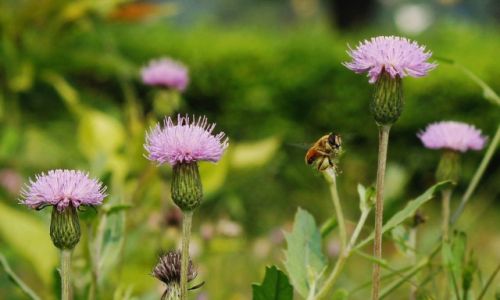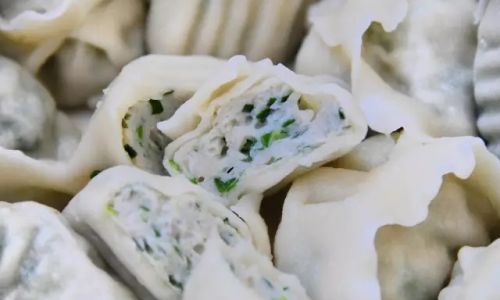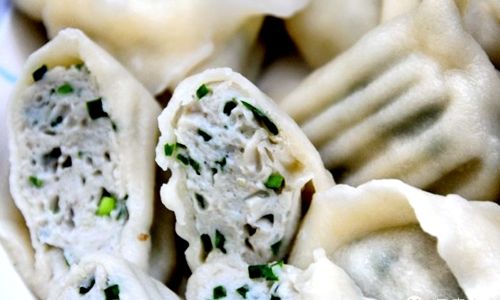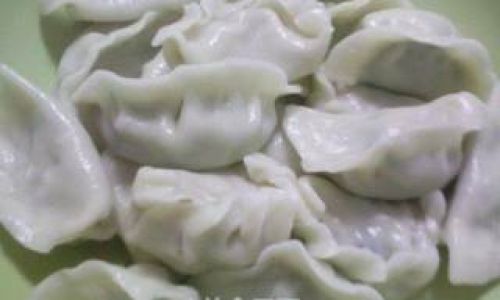“Exploring the Culinary Versatility of Ci Er Cai: Traditional and Modern Methods for Savoring This Nutrient-Rich Thistle”*
Ci Er Cai (Cirsium setosum*), a perennial herb native to East Asia, has long been revered in traditional Chinese cuisine and herbal medicine. Often overlooked in Western diets, this prickly-leaved plant—commonly known as “spiny thistle” or “field thistle”—offers a unique blend of earthy flavor and robust nutritional benefits. Beyond its historical use in folk remedies, Ci Er Cai has emerged as a culinary darling, prized for its adaptability in dishes ranging from stir-fries to soups. This article delves into the art of preparing and enjoying Ci Er Cai, highlighting its health advantages, cultural significance, and creative applications in modern kitchens.
Nutritional Profile: A Powerhouse of Wellness
Before diving into recipes, it is essential to understand why Ci Er Cai deserves a place on your plate. Rich in vitamins A, C, and K, this leafy green supports immune function, skin health, and blood clotting. Its mineral content—including iron, calcium, and magnesium—contributes to bone strength and metabolic efficiency. Notably, Ci Er Cai boasts high levels of antioxidants like quercetin and kaempferol, which combat oxidative stress and inflammation.
Research suggests that regular consumption may aid in regulating blood sugar levels and promoting liver health, attributes tied to its traditional use in detoxifying teas. However, its most compelling feature for home cooks is its low-calorie, high-fiber composition, making it an ideal ingredient for weight-conscious diets.
Harvesting and Preparation: From Field to Fork
Ci Er Cai thrives in temperate climates, often found in meadows, roadsides, and gardens. Foraging enthusiasts should seek young, tender leaves (best harvested in spring) as older plants develop a bitter taste and tougher texture. When selecting store-bought varieties, opt for vibrant green leaves with minimal browning.
Handling Prickly Leaves
The plant’s spiny edges demand careful preparation. To neutralize the thorns:

- Blanching: Submerge leaves in boiling water for 2–3 minutes, then transfer to an ice bath. This softens spines and reduces bitterness.
- Manual Removal: Wearing gloves, gently strip spines from the leaf margins using a knife or scissors.
Culinary Applications: From Classic to Creative
Ci Er Cai’s versatility shines in diverse cooking methods. Below are eight techniques to transform this humble green into a gourmet experience.
Stir-Fried Ci Er Cai with Garlic and Dried Chilies
A staple in Chinese households, this dish highlights the leaf’s ability to absorb bold flavors.
- Ingredients: 200g Ci Er Cai (blanched and chopped), 3 garlic cloves (minced), 2 dried red chilies (crushed), 1 tbsp cooking oil, 1 tsp soy sauce, salt to taste.
- Method: Sauté garlic and chilies until fragrant. Add Ci Er Cai and stir-fry for 3–4 minutes. Season with soy sauce and salt. Serve with steamed rice.
Ci Er Cai and Pork Dumplings
Incorporate finely chopped, blanched Ci Er Cai into dumpling fillings for a fresh twist.
- Filling: 250g ground pork, 100g Ci Er Cai (blanched and minced), 1 tbsp ginger (grated), 2 tbsp soy sauce, 1 tsp sesame oil, white pepper.
- Assembly: Mix ingredients, wrap in dumpling wrappers, and steam or pan-fry until golden.
Ci Er Cai and Egg Drop Soup
This light, brothy soup is a soothing appetizer or side dish.

- Ingredients: 4 cups chicken broth, 100g Ci Er Cai (chopped), 2 eggs (lightly beaten), 1 tsp cornstarch (dissolved in water), salt, white pepper.
- Method: Simmer broth, add Ci Er Cai for 2 minutes. Stir in cornstarch slurry, then slowly pour in eggs while stirring. Season and serve.
Pickled Ci Er Cai
Preserve the greens in a tangy brine for a zesty condiment.
- Brine: 1 cup vinegar, 1 cup water, 2 tbsp sugar, 1 tbsp salt, 1 tsp red pepper flakes.
- Process: Pack blanched Ci Er Cai into jars, cover with boiling brine, and seal. Refrigerate for 3–5 days before serving.
Ci Er Cai and Tofu Stir-Fry (Vegan-Friendly)
A protein-rich dish that pairs the green’s crunch with silken tofu.
- Ingredients: 1 block firm tofu (cubed), 150g Ci Er Cai (chopped), 1 tbsp fermented black beans, 1 tbsp vegetable oil, 1 tsp chili paste.
- Method: Pan-fry tofu until golden. Add black beans, chili paste, and Ci Er Cai. Stir-fry until heated through.
Ci Er Cai and Mushroom Quiche
Elevate breakfast with a savory, herbaceous quiche.
- Crust: 1 pre-made pie crust.
- Filling: 1 cup Ci Er Cai (blanched and chopped), 1 cup mushrooms (sautéed), 4 eggs, 1 cup milk, 1 cup cheddar cheese, salt, pepper.
- Assembly: Layer Ci Er Cai, mushrooms, and cheese in crust. Whisk eggs and milk, pour over, and bake at 375°F (190°C) for 35–40 minutes.
Ci Er Cai Pesto
Swap basil for Ci Er Cai in a vibrant, nutrient-dense pesto.

- Ingredients: 2 cups Ci Er Cai (blanched), ½ cup olive oil, ¼ cup pine nuts, 2 garlic cloves, ½ cup Parmesan, salt.
- Method: Blend all ingredients until smooth. Toss with pasta or spread on bruschetta.
Ci Er Cai and Potato Curry
Infuse Indian-inspired flavors into this hearty stew.
- Ingredients: 2 potatoes (cubed), 1 onion (diced), 1 tbsp curry powder, 1 can coconut milk, 1 cup Ci Er Cai (chopped), 1 tbsp oil.
- Method: Sauté onions, add curry powder, potatoes, and coconut milk. Simmer 15 minutes, then stir in Ci Er Cai for 5 minutes.
Regional Variations: A Global Perspective
While Ci Er Cai is deeply rooted in Chinese cuisine, its culinary journey extends beyond borders. In Korea, similar thistle varieties are fermented into kimchi, adding a pungent kick. Japanese chefs occasionally incorporate it into ohitashi (blanched greens with soy sauce). In Europe, foragers in Mediterranean regions sometimes use related species in rustic pies and gratins.
Health Considerations and Tips
- Oxalate Content: Like spinach, Ci Er Cai contains oxalates, which may affect kidney stone risk. Cooking reduces oxalate levels.
- Allergies: Those with ragweed allergies should exercise caution, as thistles belong to the Asteraceae family.
- Sustainability: Opt for cultivated Ci Er Cai to avoid depleting wild populations.
Cultural Significance: From Folklore to Festivals
In Chinese folklore, Ci Er Cai symbolizes resilience, thriving in harsh conditions. During the Qingming Festival, it is sometimes used in offerings to honor ancestors. Traditional medicine texts like Compendium of Materia Medica laud its cooling properties, often prescribed to alleviate heatstroke.

Modern Innovations: Ci Er Cai in Fusion Cuisine
Chefs worldwide are experimenting with Ci Er Cai in avant-garde dishes. Think:
- Ci Er Cai Gnocchi: Mixed into potato dough for a herbaceous pasta.
- Thistle Tinctures: Infused in vodka for botanical cocktails.
- Dehydrated Crisps: Baked until crunchy as a gluten-free snack.
Conclusion: Embracing the Bitter-Sweet Allure
Ci Er Cai is more than a humble weed—it’s a testament to the intersection of nutrition, culture, and culinary artistry. Whether stir-fried, pickled, or blended into pesto, this prickly green invites adventurous eaters to redefine their relationship with wild edibles. As sustainable dining gains momentum, Ci Er Cai stands as a bridge between tradition and innovation, proving that even the humblest ingredients can inspire gastronomic wonder.
Final Thoughts for the Home Cook
Don’t shy away from Ci Er Cai’s slight bitterness; it’s what lends depth to dishes. Pair it with umami-rich ingredients like mushrooms or aged cheeses to balance flavors. With proper preparation, this thistle transforms from a weed into a weekday hero—nutritious, delicious, and undeniably unique.






0 comments